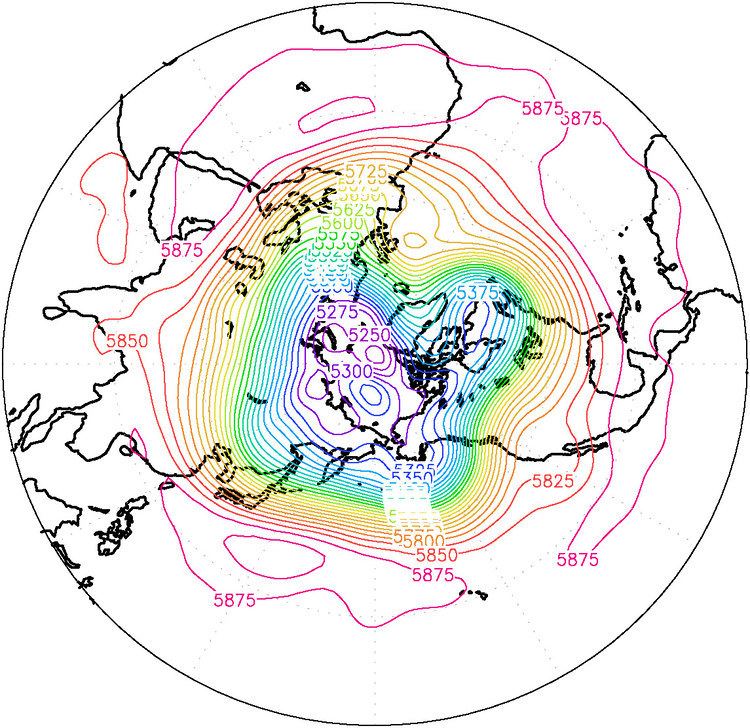 | ||
In meteorological applications, a zonal wavenumber or hemispheric wavenumber is the dimensionless number of wavelengths fitting within a full circle around the globe at a given latitude.
where λ is the wavelength, r is the Earth's radius, and
Zonal wavenumbers are typically counted on the upper level (say 500-millibar) geopotential maps by identifying troughs and ridges of the waves. Wavenumber 1 has one trough and one ridge, i.e. one wavelength fits
Wavenumber 0 corresponds to zonal (symmetric) flow. Wavenumbers 1–6 are called long waves and often synonymous in meteorological literature with the mid-latitude planetary Rossby waves.
